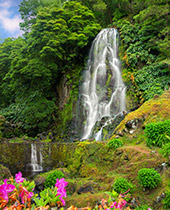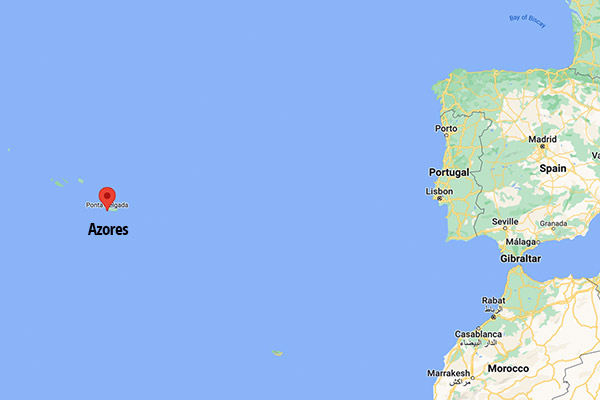
The rich diversity of flora and fauna in the Azores is due to the influences of a number of environmental factors including the following: the range in elevation from sea level to 2,300 metres (2,300 ft.); the archipelago’s 1,500 km (930 mile) isolation from a large landmass; volcanic activity; the nutrient rich, warm Azores Current. These combined influences result in seventy endemic species of plants (over 35% of the islands’ flora) and a bird list boasting almost 400 species that includes two endemic species: the Azores Bullfinch (Pyrrhula murina) and Monteiro’s Storm-Petrel (Hydrobates monteiroi). The high number of endemics is a wonderful example of island speciation, a phenomenon that Charles Darwin described during his time on another volcanic archipelago: the Galapagos Islands. Interestingly, Darwin also visited the Azores on his return voyage from the Galapagos Islands.
Who wouldn’t be salivating at the chance to go birding and plant hunting on these islands? A good place to start exploring would be on the Azores’s largest island, São Miguel. Here there is a small remnant humid subtropical forest, the Azores laurel forest or laurisilva, which is a relic of the vegetation community that was present in parts of Europe during the Tertiary Period and mostly disappeared due to glaciation.
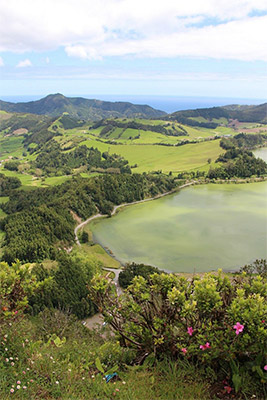
Views of Sao Miguel
Plant species found here are endemic junipers, laurel and heather including the Azores Bellfower (Azorina vidalii). A 6 km2 region of this laurisilva forest is a protected forest reserve (Pico da Vara/Ribeira do Guilherme Special Protection Area) and is the habitat of the endemic Azores Bullfinch known locally as the Priolo. With a population of only a few hundred in 2005, the Priolo was listed as “critically endangered”. Due to conservation efforts the population has risen to 1,000 birds and the species was recently down-listed on the ICUN’s list to “vulnerable”.
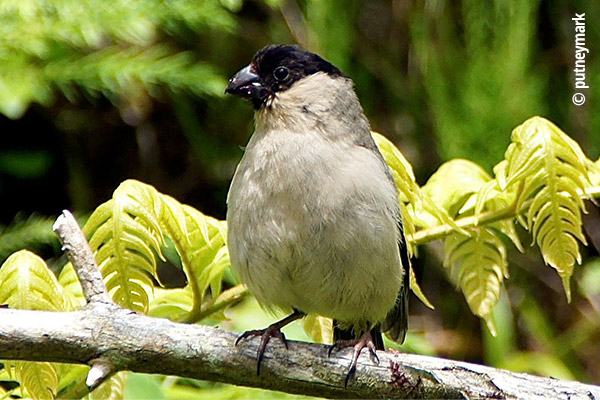
Azores Bullfinch
The Azores archipelago consists of nine islands, each the top of volcanoes erupting from the sea floor. The lava flows from fissures between two tectonic plates and forms the underwater volcanic mountain range called the Mid-Atlantic Ridge. In the area of the Azores, these volcanic sea mounts reach between 1000 and 3000 metres to the ocean’s surface. As the nutrient-rich waters of the Azores Current reach the islands, deep waters are pushed to the surface where sunlight powers photosynthetic phytoplankton production. The phytoplankton is the base of a complex, diverse food web that results in the rich biodiversity on the islands being mirrored in the surrounding ocean.
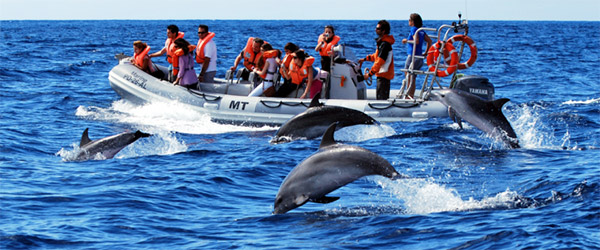
These highly productive waters attract two species that I am very much looking forward to seeing in April 2023. They are two species of extremes; similar in many ways, but different in others: Blue Whales (Balaenoptera musculus); and Sperm Whales (Physeter macrocephalus). I have seen both of these whales before; Blue Whales in the waters of the St. Lawrence near Tadoussac and Sperm Whales in the Caribbean off the coast of the island of Dominica. While I’ve never seen them in the same place, that’s about to change because in the waters surrounding the Azores you can see both!
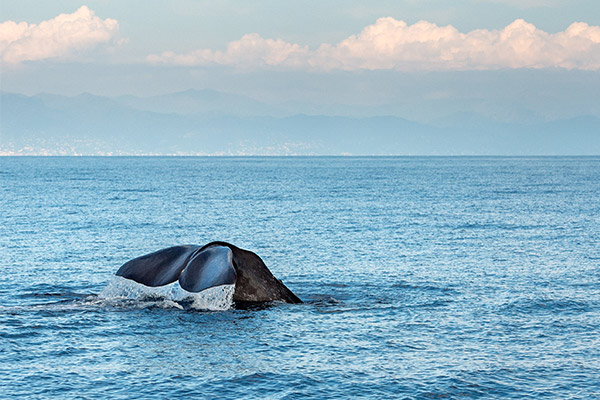
Sperm Whale
I mentioned that they are “two species of extremes; similar in many way but different in others”. What do I mean? While both these species are whales, they are a different kind of whale. The sperm whale is a “toothed” whale and has teeth on its lower jaw. The blue whale is a “baleen” whale and instead of teeth they have horny baleen plates growing from their upper jaw. Baleen whales use the plates to filter their food from the water when feeding. The sperm whale is a “toothed” whale and has teeth only on its lower jaw.
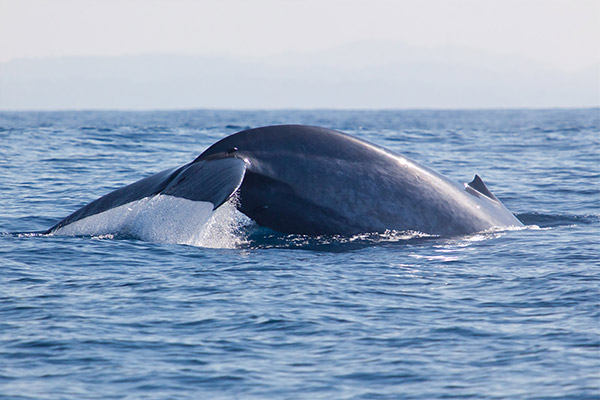
Blue Whale
Both whales are similar in that they share the label of being the largest. The Blue Whale is the largest animal to have ever lived on Earth and the Sperm Whale is the largest of the toothed whales as well as being the largest toothed predator! Blue and Sperm whales are similar though in that they both feed on invertebrates. However, Blue Whales feed almost exclusively on a very small 6 cm invertebrate called krill and the Sperm Whales feed on the largest invertebrate animal, the 14-metre Colossal Squid. Another difference? Blue whales are shallow feeders, usually feeding to depths of 100 metres, while sperm whales are a deep feeders, diving to depths of 1200 metres!
Another similarity? Both whales are so exciting to see! Join me on tour and you’ll experience the excitement with me.


